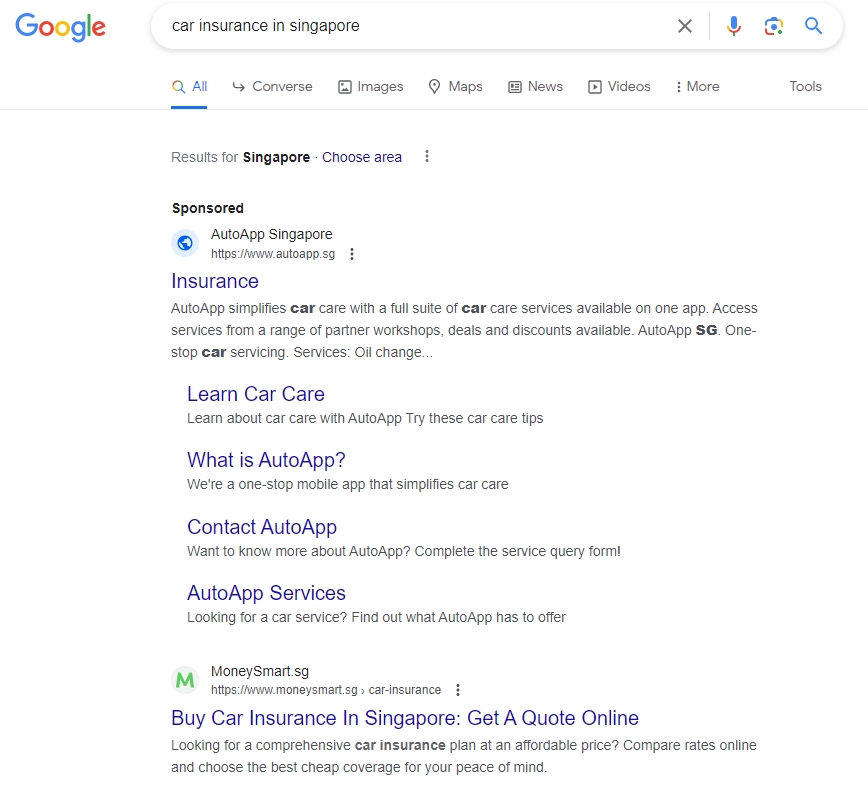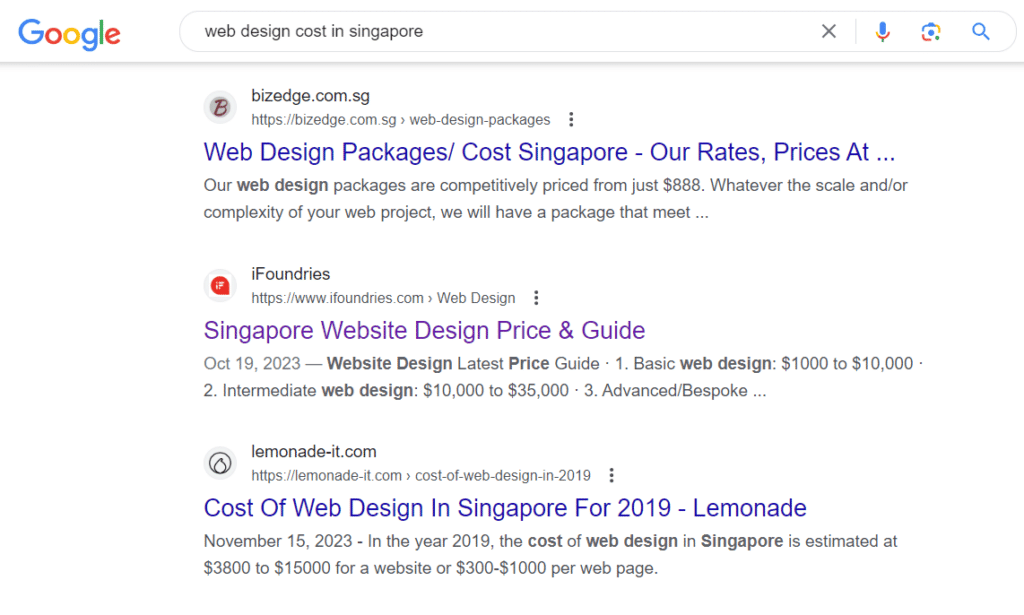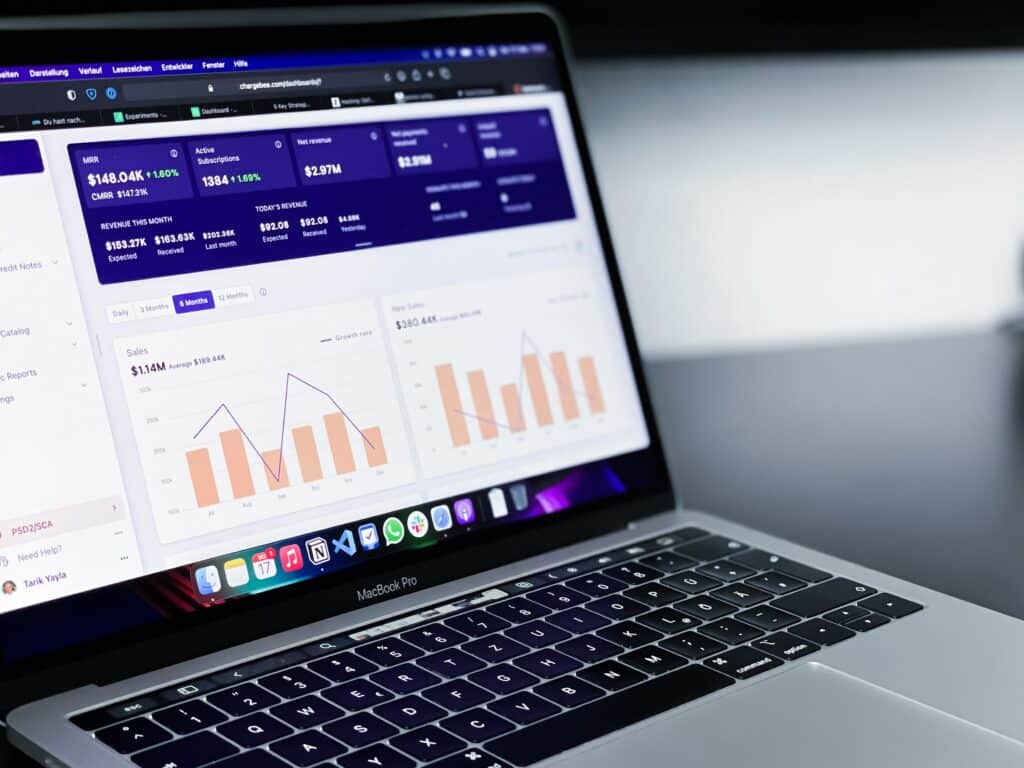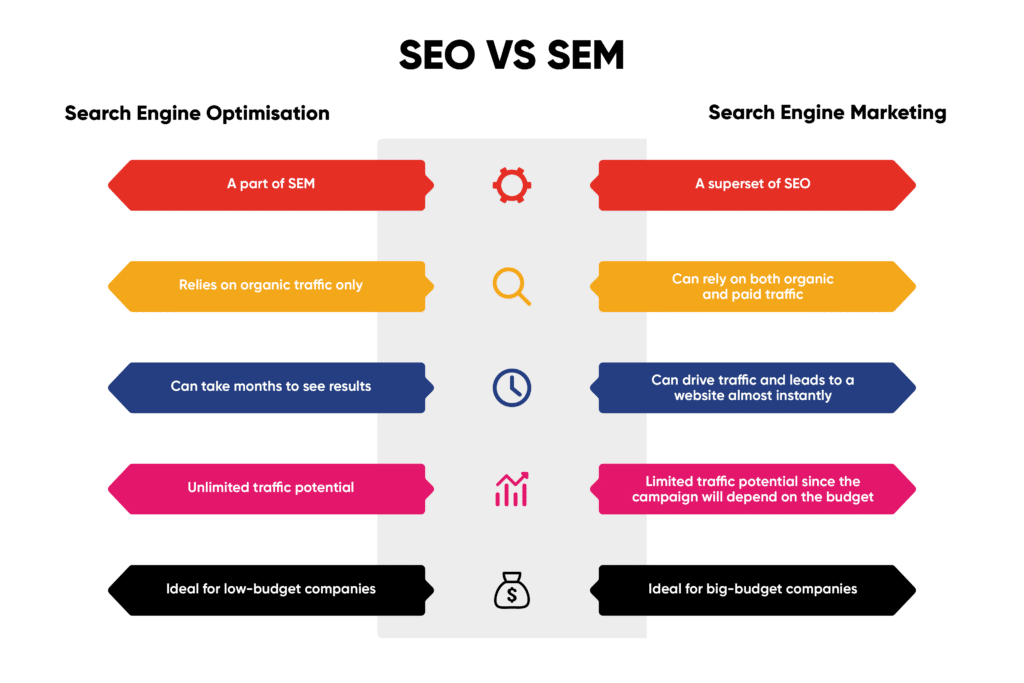Search Engine Optimization (SEO) and Search Engine Marketing (SEM) are both ways to improve a website’s visibility in search engine results. SEO focuses on unpaid traffic, while SEM uses paid ads.
To better understand how SEO and SEM work, let’s put it this way. When you enter a search query, Google divides its results into two categories: paid and organic.
Paid search results are generated under the ‘Sponsored” tag, while organic search results are shown right below the paid ones.

Both offer unique advantages and require different approaches. But there’s much more to explore and examine when it comes to unpacking SEO vs SEM.
In this article, we’ll ensure that you know the fundamental distinctions of each and touch on questions you’d commonly ask in discovering both strategies. Specifically, we’ll provide answers to:
- What is SEO?
- What is SEM?
- What is the Difference Between SEO and SEM?
- Why use SEO and SEM together?
- How much does SEO and SEM cost?
- How long does SEM take?
If you think of incorporating SEO and SEM into your marketing strategies but need to familiarise yourself with the two, stick around. We’ve got some unpacking to do!
What is SEO?
SEO stands for Search Engine Optimization. It’s a set of processes that help improve a website’s visibility in search engines.
Most users look for products, services, random tips or information online and rely on Google search to find answers to topics they are probing about. With people continuously congesting the online market, it is challenging for brands to be widely known in the internet space.
Through SEO, businesses will get better visibility by providing optimised materials created according to their potential customers’ needs and interests.
For example, you are a business offering web design services. When people search for “web design cost in Singapore”, if not to rank no. 1, your goal should be to appear on the first page of search results to gain the web exposure you aim for.

But how do brands craft optimised content? SEO focuses on these core steps: keyword research, on-page optimisation, content creation, technical optimisation, and off-page optimisation.
Keyword Research
Keyword research involves identifying relevant and valuable keywords for a website’s products or services. It is the backbone of SEO and is generally about finding what people are searching for.
Using well-researched keywords, you can create content closer to your audience–giving your business higher chances of attracting the right traffic and leads. SEO agencies usually consider keyword research as their first step in an optimisation campaign.
Remember this: if no one searches for what you are writing about in your content, you won’t get any traffic from Google. So, it is essential to determine the right keyword for your business and incorporate it into your blog posts, service pages, and more.
On-Page SEO
On-page SEO involves optimising content inside your web page to improve rankings and drive more significant organic traffic. Elements related to on-page SEO are title tags, URLs, internal links, meta descriptions, optimised images, etc.
It is also important to note that Google acknowledges on-page SEO signals when ranking pages. Google uses keywords and other on-page SEO elements to verify if a page matches a user’s search intent. If Google finds it relevant enough, it serves it to the user.
Content Creation
The goal is for users to find you. Content creation in SEO is performed to attract search engine and website traffic. There are several types of SEO content:
- Blog posts
- Product pages
- Lists
- Infographics
- Videos
- Articles
- Case Studies
- Landing pages
You can optimise every type using the right keywords, links, title tags, and more!
Technical SEO
Technical SEO involves steps to ensure that your website is enhanced enough to meet the technical demands of search engines. When using technical SEO, your website’s structure, code, and other technical aspects are optimised.
Doing well on the technicalities can increase your page’s ranking and make it more understandable, faster, and easier to crawl and index.
Additionally, when we say easier to crawl, search engines can quickly grab content from your pages and then use the links on them to find even more pages. On the other hand, page indexing is adding a web page’s content to Google to be considered for rankings after your site has been crawled.
Technically optimising your page will involve dealing with 301 redirects, 404 pages, URL structure, Site architecture, and more.
Off-Page SEO
Off-page SEO is about getting exposure for your website by applying SEO tactics through different channels to improve rankings. This strategy includes social media marketing, guest posting, link building, podcasting, video marketing, and more.
Off-page SEO aims to establish an image of trustworthiness and authoritativeness for your website.
What is SEM?

SEM, or search engine marketing, involves paying for ad space on search engine results pages for specific keywords. SEM involves creating and running ad campaigns on platforms like Google Ads and Bing Ads.
But how do you get your paid ads to search engine results pages? You’ll need to bid on keywords related to your products and services that users may enter as a query. Once you’ve successfully bid on a particular keyword, your advertisement will appear as a result of a user’s search query. The process is called pay-per-click (PPC) advertising.
Moreover, here’s the catch.
SEM is not only limited to running paid campaigns to drive traffic to your site.
When implementing a search engine marketing campaign, you can also leverage organic traffic through SEO or even combine SEO with paid campaigns like PPC.
Why not use both, right?
What is the Difference Between SEO and SEM?
On a quick note, here are the key distinctions between SEO and SEM:

Both SEO and SEM have the end goal of gaining website traffic and visibility. But the main difference is how they attract the traffic they are aiming for.
SEO is focused on optimising content to get traffic from organic search results only. SEM is centred on getting traffic from both organic and paid campaigns.
Having said that, SEO is a type of search engine marketing and falls under the umbrella of SEM.
Why use SEO and SEM together?
Both SEO and SEM are effective digital marketing strategies that possess different strengths. SEO is ideal for businesses looking for sustainable results, while SEM is great for companies looking for quick results. However, both strategies can give your business an edge over your competitors.
Here are some benefits of using SEO and SEM together:
- It strengthens your brand image and awareness.
- Using both strategies, you’ll get more traffic, accelerating more remarkable results in a short period.
- Your website can appear more often since you can populate paid and organic search results.
- You can extract valuable data insights on conversion rates and keywords from your search engine marketing campaign. The information you’ve gathered can help you in driving your SEO efforts.
SEO and SEM are complementary strategies working together to improve your website’s visibility and drive traffic. SEO can impact SEM by providing insights into the best keywords to target in your ads. Additionally, a strong SEO strategy can improve your website’s ranking, making your SEM ads more effective.
Combining both strategies can create a more comprehensive search marketing strategy that maximises your results.
How much does SEO SEM cost?
It depends. Here’s how it works:
The thing about SEO services is that when we hear it’s ‘free’ traffic, it doesn’t necessarily mean that you won’t invest even a single penny to gain visibility in search engines.
Indeed, you won’t pay when someone clicks on your ads, but it will take a village to land a spot on organic results pages. Of course, you need to create content, and creating one may entail hiring a writer, graphic designer, SEO specialist, using a paid SEO tool, and more!
On the other hand, SEM may require you to spend money up-front. Each click may cost you cash. More clicks, more money spent. But, it is essential to note that your traffic will drop to zero when you stop paying and putting out cash in PPC.
How long does SEM take?
Depending on which strategy you’ll use (PPC or SEO), SEM can be fast or slow.
PPC can be faster–in fact, instant. Google can begin showing your advertisement to searchers immediately, which means you can drive traffic right away.
However, SEO takes time. An analysis showed that it can take an average of 2 years to rank on Google’s first page. On the bright side, you can still see visible results on search pages within a few months if you implement best practices on SEO and target the right and long tail keywords.
Conclusion
Understanding the differences between SEO and SEM is crucial for businesses looking to succeed in the search marketing industry. Using both SEO and PPC in your online marketing strategy is crucial for achieving continuous visibility and success on the internet.
In utilising both SEO and SEM, you’ll need to conduct thorough keyword research and ongoing optimization to improve your online presence and drive more website traffic.
Businesses in Singapore can benefit significantly from working with an SEO company in Singapore or a digital marketing agency that offers website design services.
By leveraging a PSG digital marketing grant and working with a reputable digital marketing agency, businesses can create a comprehensive strategy that maximizes their online visibility and drives growth.
Interested in making the most out of SEO and SEM? Talk to us!





